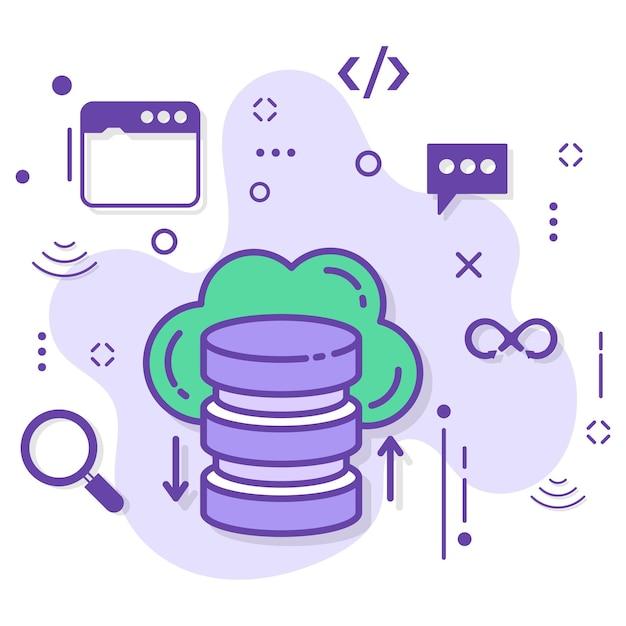In today’s world, data governance is critical to ensure the security, accuracy, and proper utilization of data. With the advent of technology, there are numerous tools and applications available in the market that make data governance more manageable. One such tool is the Data Governance API.
APIs, or Application Programming Interfaces, are a set of protocols and tools that enable different software applications to communicate and interact with each other. APIs have become an integral part of data governance and management due to their ability to streamline data controls, simplify data processing, and increase the efficiency of software applications.
But what is API governance, and what role does it play in data governance? Essentially, API governance is a set of processes and procedures that ensure APIs are developed and managed in a controlled and secure manner. This includes the documentation of necessary protocols and procedures, the identification of roles and responsibilities, and the implementation of necessary security controls.
However, implementing an API governance framework can be a daunting task. This is where the RACI (Responsible, Accountable, Consulted, and Informed) model comes in. The RACI model aids in identifying who is responsible, accountable, consulted, or informed during the creation and management of APIs.
In this blog post, we’ll explore the importance of API governance in data governance, including the roles and responsibilities of API governance, popular solutions like Rudderstack and SAP Master Data Governance API, and how to implement a sound API governance framework.
Understanding the Data Governance API
Data governance refers to the overall management of the availability, usability, integrity, and security of data used in an enterprise. In other words, data governance ensures that organizations are using their data effectively while minimizing risks and innovating new use cases. Data governance is critical in any organization for various reasons such as regulatory compliance, mitigating data breaches, and optimizing decision-making processes.
The Data Governance API is a tool that makes it possible for businesses to implement automated processes for defining, managing, and enforcing data policies. This API allows businesses to integrate their data governance strategy into various applications and systems. With the Data Governance API, the organization can create standardized policies, automate the policy approval process, and monitor policy compliance.
Benefits of Data Governance API
Easy Management of Data Policies
Data Governance API simplifies data management by allowing businesses to create and manage policies in a single location rather than multiple tools. The API consolidates policies and processes leading to more efficient and centralized data management.
Data Consistency
Data Governance API ensures that the data is consistent throughout the organization as all the policies are defined and enforced from a single location. This helps in maintaining data accuracy, completeness, and reliability.
Security and Compliance
The API enables businesses to set and enforce access controls and restrictions according to their data governance policies. With the implementation of the Data Governance API, the organization is able to ensure compliance with mandatory regulations such as GDPR and HIPAA.
The Data Governance API offers a solution to many data management challenges faced by organizations while ensuring compliance with regulatory standards. By streamlining policies and automating certain processes, companies can minimize certain risks while taking full advantage of the business value represented by their data-assets. With the Data Governance API, businesses can achieve data governance goals successfully.
API Management RACI
API Management RACI is an essential aspect of data governance. RACI is an acronym for Responsible, Accountable, Consulted, and Informed, which outlines the roles of API stakeholders in an organization. RACI is an essential tool that helps to identify who is responsible for taking action, who is accountable for the outcome, who should be consulted, and who should be informed about the project. The RACI matrix helps teams to work effectively by clarifying roles and responsibilities.
What is API Management RACI
API Management RACI is a methodology that helps organizations to manage their APIs effectively. It is necessary to identify the stakeholders’ roles and responsibilities in the API management process to ensure an efficient operation. A RACI matrix enables an API team to allocate tasks and responsibilities, clarify expectations, and promote accountability.
Understanding RACI
The RACI matrix has four categories consisting of Responsible, Accountable, Consulted, and Informed. Understanding each of these categories is crucial in creating a successful API management plan.
Responsible
Those who are Responsible have the task of completing specific API management actions. They are in charge of accomplishing individual tasks, and they possess the authority to achieve them.
Accountable
The Accountable role in API management refers to the person responsible for the task being completed. They are responsible for overseeing the API management activity, knowing the results, and making decisions that promote success.
Consulted
Consulted stakeholders are responsible for offering their knowledge and perspective on API management. They provide information, advice, and feedback to the team.
Informed
Informed stakeholders are informed about API management activities, and they receive updates on project status. They do not play a direct role in API management, but they are informed of progress and results.
Benefits of API Management RACI
Implementing the API Management RACI methodology benefits an organization in several ways. It promotes clarity, collaboration, and accountability on API management projects. The RACI matrix aids in preventing stress, confusion, and delays by ensuring that everyone knows their role and responsibilities in the API management process.
In conclusion, API Management RACI is an efficient methodology for managing API projects. It provides clarity, accountability, and collaboration among the stakeholder. By understanding and employing the RACI matrix, an organization can ensure that API management projects are efficiently executed.
API Governance Framework
In the world of data governance, an API governance framework is an essential component. It is designed to ensure that APIs are managed, controlled, and used in a responsible and effective manner. An API governance framework is a set of rules, policies, and procedures that govern the design, development, testing, and deployment of APIs.
Importance of API Governance Framework
Without an API governance framework, organizations can risk exposing sensitive data through vulnerable APIs, leading to costly consequences. The framework ensures that the API services are validated before they are exposed to the clients and that there is a regular evaluation of the API governance policies.
Key Components of API Governance Framework
An effective API governance framework should have the following components:
API Design Standards
API design standards ensure that there is consistency in the development of APIs, making it easier to maintain them. The standards also ensure that APIs adhere to industry best practices.
API Documentation
API documentation is crucial in ensuring that clients can use APIs effectively. It includes information such as endpoint URLs, request and response formats, and authentication methods.
API Security
API security is an essential component of the API governance framework. It ensures that sensitive data is protected from unauthorized access and that access to APIs is controlled, monitored, and audited.
API Management
API management involves the monitoring and control of APIs, ensuring that they are working correctly. It includes tasks like tracking usage patterns, identifying performance bottlenecks, and managing API version control.
Benefits of an API Governance Framework
An effective API governance framework leads to improved security, agility, and consistency in API development. It helps organizations better manage API risk and change, improving quality assurance and compliance processes.
In conclusion, an API governance framework is essential for a safe, secure, and reliable API ecosystem. It ensures that organizations can effectively mitigate risk from API usage through policies and procedures, ultimately improving API quality and usefulness.
RudderStack Data Governance
As companies collect and store increasing amounts of data, it’s becoming more important than ever to ensure that that data is properly organized, managed, and governed. This is where data governance comes in, and RudderStack is one of the leading providers of data governance tools.
What is RudderStack
RudderStack is a data governance platform that helps organizations manage and govern their data. It provides a centralized hub for all data-related activities, allowing companies to ensure that their data is accurate, reliable, and secure. RudderStack offers a range of features including data profiling, data quality, data lineage, and more.
How does RudderStack help with data governance
RudderStack provides a range of tools and features to help companies manage their data governance activities. One of the key benefits of RudderStack is that it provides a centralized platform for all data-related activities. This makes it easier for organizations to manage their data and ensure that it’s properly governed.
Another key benefit of RudderStack is that it provides data profiling tools. Data profiling helps organizations understand the quality and completeness of their data. This can help identify data quality issues and ensure that data is accurate and reliable.
Data governance is becoming increasingly important, especially for companies that are dealing with large amounts of data. RudderStack provides a range of tools and features to help organizations manage and govern their data. With its centralized platform and data profiling tools, RudderStack is a valuable tool for any company looking to ensure that their data is properly managed and governed.
SAP Master Data Governance API
Data governance is not only essential for companies to follow regulatory compliance but also to ensure consistent data quality for their business and industry. SAP Master Data Governance API is one of the best data governance solutions in the market. It is a platform that enables SAP customers to manage the master data of their enterprise resource planning (ERP) systems.
What is SAP Master Data Governance API
SAP Master Data Governance API is an application programming interface (API) that simplifies the integration of SAP Master Data Governance (MDG) with other systems. It allows SAP customers to govern their master data across multiple systems, including ERP, customer relationship management (CRM), and supply chain management (SCM).
How does SAP Master Data Governance API work
SAP Master Data Governance API enables customers to leverage the power of SAP MDG, a comprehensive master data management solution, to automate and simplify their data governance processes. It provides RESTful APIs that can be easily integrated with other systems to execute different data management tasks, such as creating, updating, and deleting master data records.
Key Features of SAP Master Data Governance API
-
One of the best features of SAP Master Data Governance API is its ability to support multiple data domains, which enables customers to manage their entire enterprise data landscape.
-
SAP Master Data Governance API provides data model APIs that can be used to create custom data models for customers’ specific data domains.
-
SAP Master Data Governance API features robust data quality rules, which allows the identification and resolution of data inconsistencies and errors.
-
It provides business process APIs, which allows customers to automate their business processes through custom workflows.
-
SAP Master Data Governance API comes with role-based access control, which provides a secure and controlled way of accessing data within the MDG system.
Benefits of SAP Master Data Governance API
SAP Master Data Governance API helps organizations to achieve better data governance by providing several benefits, including:
-
Simplify data governance processes by automating and integrating master data management across multiple systems.
-
Improving data accuracy by identifying and resolving data inconsistencies and errors.
-
Increase productivity by automating business processes and eliminating manual data management tasks.
-
Improve data security by implementing role-based access control within the MDG system.

In conclusion, SAP Master Data Governance API is a comprehensive data governance solution that simplifies master data management across multiple systems. It comes with several robust features that enable customers to achieve better data governance and provides numerous benefits such as improved data accuracy, increased productivity, and better data security.
What is API in Data Governance
Data governance is the set of practices and processes to manage data and ensure its accuracy, timeliness, completeness, consistency, and security across an organization. The process of data governance has become more challenging as companies collect and analyze increasingly large amounts of data. One of the ways to overcome the challenge of data management is through the use of an application program interface (API).
Understanding API
An API allows one software application to access and use the services and data of another application. In other words, it is a set of protocols, routines, and tools for building software and applications. An API acts as an interface between different software applications by defining how they can communicate with each other. An API defines what the inputs and outputs of the software application are and how the inputs are processed to generate the output.
API in Data Governance
APIs play an important role in data governance by simplifying data integration and management. Data governance APIs provide a simplified, standardized method for sharing data across an organization. This allows different software applications to access the same data set and ensures that the data is consistent and up-to-date across all applications.
Moreover, APIs provide a secure way to share data across different applications, helping to ensure that sensitive data is not accessed by unauthorized personnel. APIs also improve performance by reducing the time required for data integration and management. This helps to achieve better data quality, which is a key objective of data governance.
In summary, data governance APIs provide a powerful tool for managing data across different software applications. They provide a standardized method for sharing data, improve data quality, reduce the time required for data integration, and enhance data security. By using data governance APIs, organizations can ensure their data is consistent, up-to-date, and secure. In the next section, we will discuss some of the benefits of using APIs in data governance.
API Governance Roles and Responsibilities
When it comes to data governance APIs, there are specific roles and responsibilities that come into play. These roles help ensure that the APIs are used correctly and that the data being processed is accurate. In this section, we will explore the different roles and responsibilities of API governance.
API Governance Roles
The following are the main roles involved in API governance:
1. API Owner
The API owner is responsible for managing the entire lifecycle of the API. This includes designing, developing, and deploying the API. The API owner also sets the policies and guidelines for API usage.
2. API Manager
The API manager is responsible for managing the API gateway. The API gateway is the entry point for all API requests and is responsible for routing requests to the appropriate API.
3. API Developer
The API developer is responsible for developing the API and ensuring that it meets the requirements set by the API owner. The developer must also ensure that the API is secure and that it functions correctly.
4. API Consumer
The API consumer is the user or application that consumes the API. The API consumer must adhere to the policies and guidelines set by the API owner.
API Governance Responsibilities
The following are the main responsibilities involved in API governance:
1. API Documentation
API documentation is essential for API governance. The documentation must be up to date and provide clear and concise instructions on how to use the API.
2. API Security
API security is crucial for API governance. The API must be secured to prevent unauthorized access and data breaches.
3. API Testing
API testing must be carried out to ensure that the API functions correctly and that it meets the requirements set by the API owner.
4. API Monitoring
API monitoring is necessary to ensure that the API is performing correctly and that it is meeting its service level agreement.
In conclusion, API governance involves specific roles and responsibilities that are vital to the successful implementation of data governance APIs. The API owner, API manager, API developer, and API consumer play critical roles in ensuring that the API is developed and used correctly. Documentation, security, testing, and monitoring are significant responsibilities involved in the API governance process.

